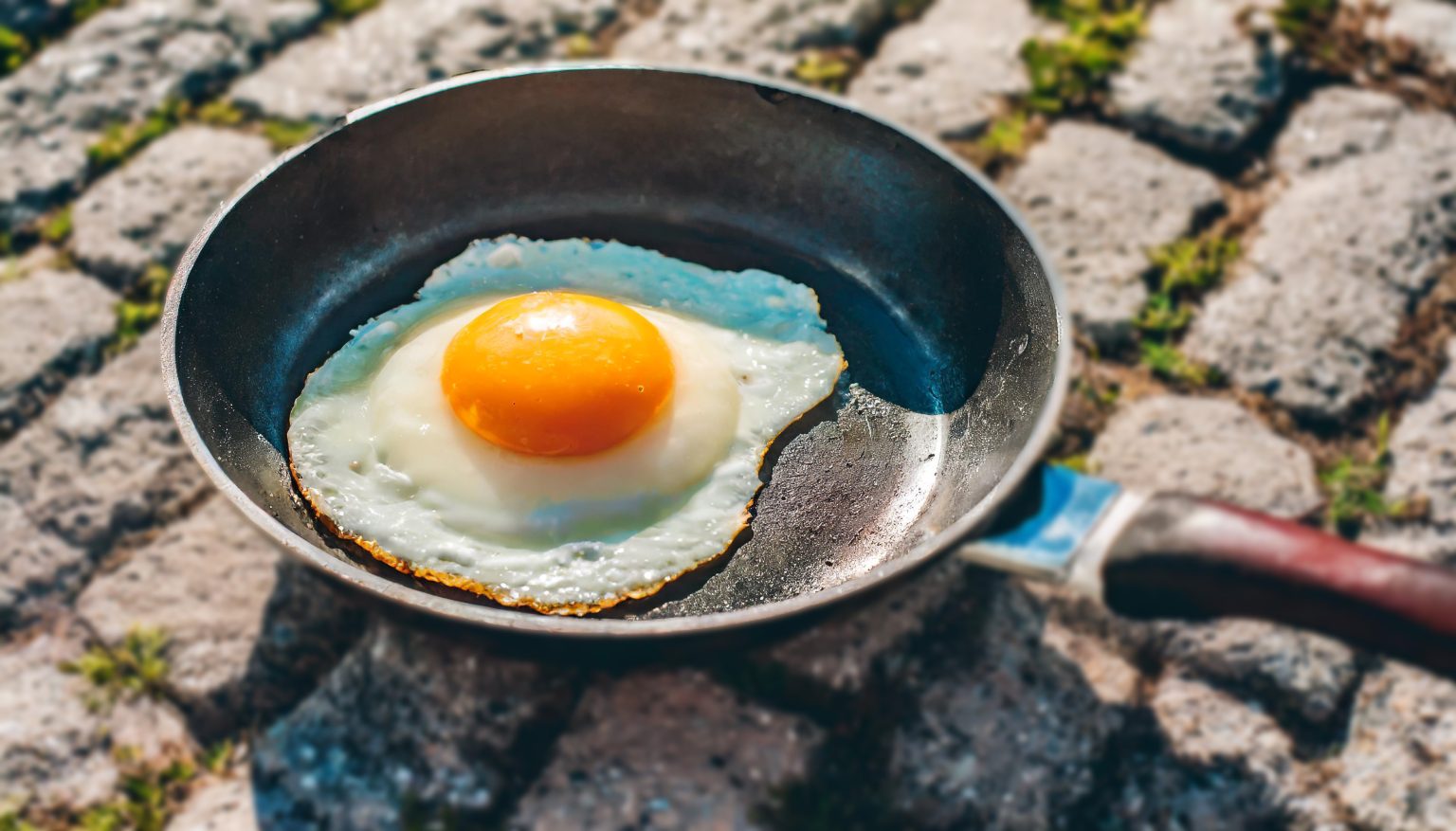Sidewalk Egg Frying Day is a quirky holiday celebrated every year on 4th July. This unofficial event captures the essence of summer heat and playful curiosity. It’s a day when people test the limits of the scorching pavement, attempting to fry an egg on the sidewalk. The idea behind it comes from old urban legends and the sheer intensity of summer temperatures.
Heatwaves during July across the United States often bring sweltering conditions. Many have wondered if it’s truly hot enough to cook an egg on the sidewalk. While concrete surfaces typically don’t get hot enough for proper frying, the experiment itself serves as a fun and educational activity. It’s a perfect way to explore concepts like heat, energy, and conduction with children.
Aside from the playful science experiment, Sidewalk Egg Frying Day is also a reminder of the extreme temperatures that can affect daily life during the summer. People are encouraged to be mindful of pets on hot pavements and to stay hydrated. This celebration of heat and discovery is both an educational experience and a whimsical nod to the power of the summer sun.
The Science Behind Frying an Egg on the Sidewalk
Frying an egg on the sidewalk is a fascinating experiment involving temperature, heat conduction, and different materials. This practice, often celebrated in locations like Oatman, Arizona, offers insights into the science of cooking eggs without a stove.
Temperature and Heat Conduction
For an egg to cook, it needs to reach a temperature of about 70°C (158°F). On a scorching day, the sidewalk can get extremely hot, but it rarely reaches this temperature.
Concrete is a poor conductor of heat, which means it doesn’t retain or transfer heat efficiently. This makes it less likely to cook an egg thoroughly.
Metal surfaces like a car’s hood are better conductors of heat. They absorb and transfer heat more effectively than concrete. This makes metal a more suitable surface for frying eggs in such experiments.
Materials and Methods
Certain materials can aid in frying an egg outside. Using a metal pan or foil can improve heat retention and conduction.
A pan placed in direct sunlight can get much hotter than the surrounding air. Adding a bit of oil or butter can help cook the egg evenly, mimicking a real kitchen setup.
Foil mirrors, which reflect and concentrate sunlight, can also be used to increase the temperature further. This method is common in solar cooking setups.
Experimenting with Alternative Cooking Surfaces
Not just any surface can be used for frying an egg with solar power. Asphalt heats up more than concrete due to its dark colour, which absorbs more sunlight.
A frying pan placed on the asphalt or a metal sheet can significantly improve the cooking process. In extreme heat locations like Death Valley National Park, these methods can sometimes make solar egg frying successful.
Testing with various materials like glass or mirrors to concentrate solar energy can also be educational and highlight the importance of engineering and STEM principles. These techniques can showcase the use of solar energy and its potential applications.
Cultural and Historical Context
Sidewalk Egg Frying Day is a fun holiday celebrated with a mix of humour, tradition, and a nod to American pastime culture. It is rooted in the idea that summer heat can be intense enough to cook an egg on the pavement, making it a quirky observance on the Fourth of July.
Sidewalk Egg Frying Day in Oatman, Arizona
One of the key places where Sidewalk Egg Frying Day is celebrated with enthusiasm is Oatman, Arizona. Each year, this small town hosts a lively event where residents and visitors gather to test the summer heat by frying eggs on the sidewalk. The holiday coincides with Independence Day, adding to the festive atmosphere.
In Oatman, participants lay eggs on the pavement, hoping the intense desert heat will cook them. The event draws tourists and locals alike, fostering community spirit and offering a humorous twist to the traditional Fourth of July celebrations. The unique celebration in Oatman showcases both the creativity and playful nature of American holiday traditions.
From Novelty to Tradition
Initially, the concept of frying an egg on the sidewalk began as a novelty. Over time, it evolved into an annual tradition, celebrated on July 4th. The idea has captured the imagination due to its quirky nature and humour. Despite scientific debates about whether the pavement can get hot enough to cook an egg, the tradition has persisted.
The observance is now an integral part of summer culture in various parts of the United States. Sidewalk Egg Frying Day has become a symbol of the peak summer heat and a fun way to mark Independence Day. It highlights the blend of cultural observances and light-hearted fun, making it a unique part of American traditions.



